iSMA Configurator
Balancing actions in the iSMA Configurator are available in the last tab of the VAV Configurator, the Balancing tab. Here, it is possible to perform actions of the balancing process.
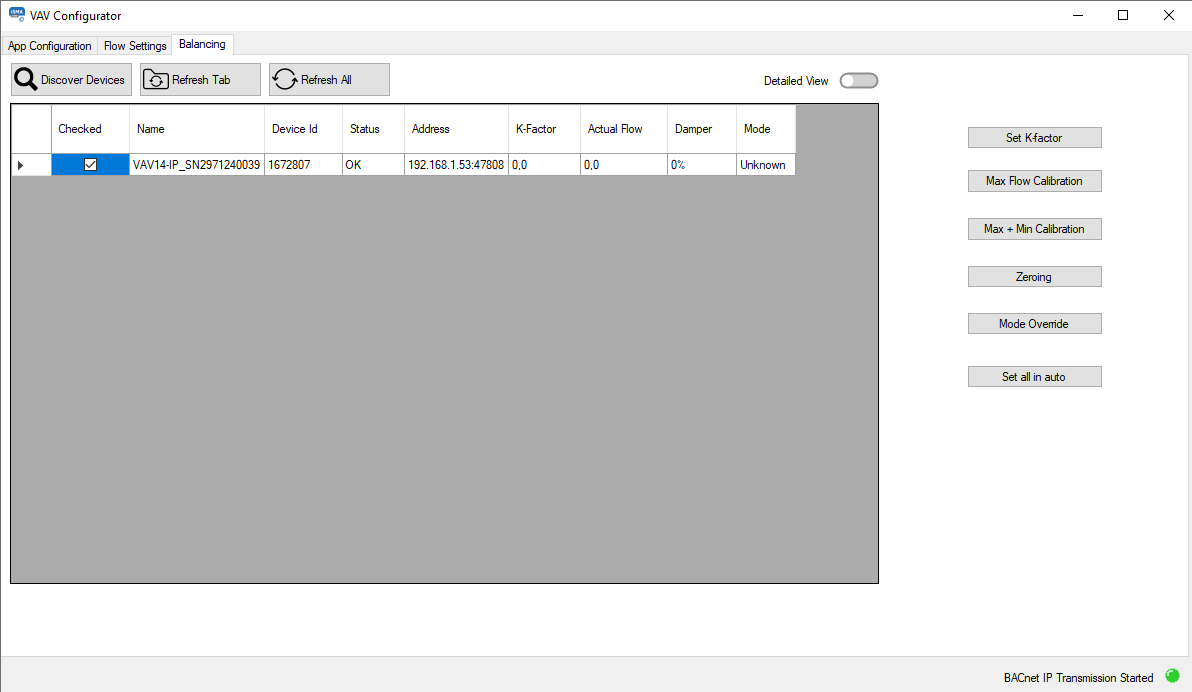
The available actions are:
Set K-Factor: sets the K-factor value to the airflow calculations (AV61, 40289);
Max Flow Calibration: executes a calibration action according to a new maximum airflow value (AV66, 40294);
Max + Min Calibration: executes a calibration action according to a new maximum and minimum airflow values (AV66, 40294);
Zeroing: performs the pressure sensor zeroing action (BV13, 00014);
Mode Override: allows to force the device to operate in one of the available modes (MSV7, 40068):
Available settings: Auto, Max. Flow, Min. Flow, User Flow, User Position, Full Open, Full Close, Calibrate;
Set all In auto: forces all dampers to the Auto mode (MSV7, 40068).
Balancing Steps
To perform the balancing process and regulate the efficiency point of the ventilation system, follow the below steps. These activities are to performed in the presented order. If required, perform the balancing process with zeroing, however, according to the specific user and accuracy requirements, it is possible to omit the pressure sensor zeroing and/or minimum airflow calibration.
Balancing with zeroing
Pressure sensor zeroing.
Set the factory K-factor.
Measure the airflow and enter the value in the designated field.
Perform the maximum airflow calibration.
Measure the airflow and enter the value in the designated field.
Perform the minimum airflow calibration.
Balancing based on the maximum and minimum airflow calibration
Set the factory K-factor.
Measure the airflow and enter the value in the designated field.
Perform the maximum airflow calibration.
Measure the airflow and enter the value in the designated field.
Perform the minimum airflow calibration.
Balancing based on the maximum airflow calibration
Set the factory K-factor.
Measure the airflow and enter the value in the designated field.
Perform the maximum airflow calibration.
Pressure Sensor Zeroing
If required, pressure sensor zeroing is an initial action of the balancing process. According to the specific user and accuracy requirements, this action can be omitted in the balancing process.
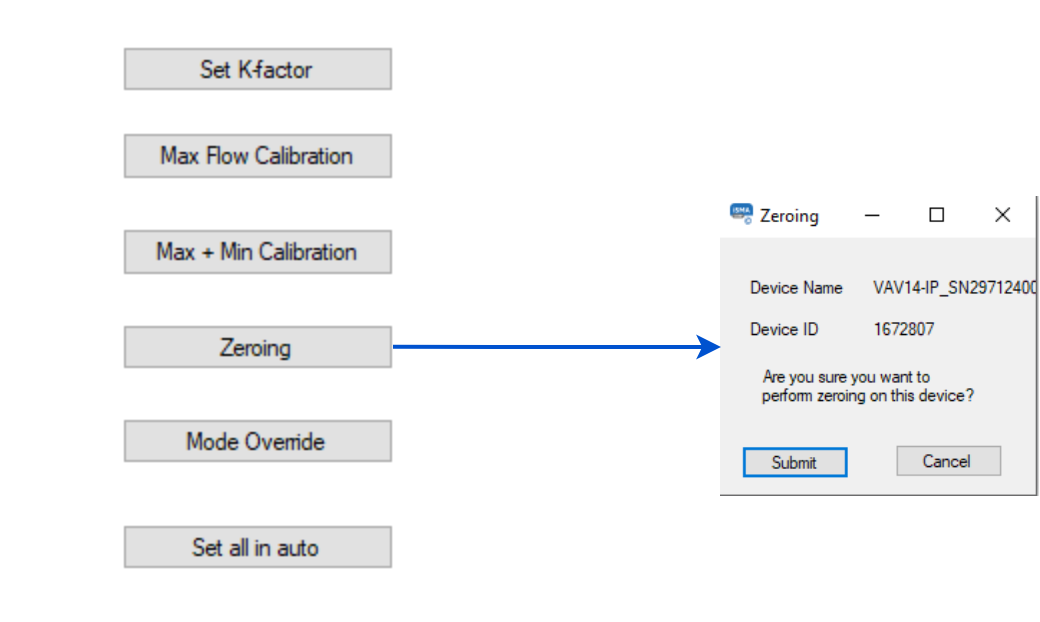
Zeroing action pop-up
Pressure sensor zeroing is a part of the VAV balancing process, which aims at eliminating a constant measurement error of differential pressure on a built-in pressure sensor. The zeroing process involves the following steps:
Make sure the differential pressure sensor is disconnected from the measuring cross or other measuring method.
Use a flexible hose of an appropriate diameter to connect the two spigots (+ and -).
Make sure the hose is well secured and tight to equalize the pressures on both ports.
Invoke the zeroing action.
Detach the hose.
Restore the normal connection of the sensor to the measuring cross or other target circuit, pay attention to the polarity.
Setting K-factor
Setting the K-factor is a mandatory part of the balancing process. It is normally provided by the manufacturer of the VAV box. If for any reason it is unavailable, it is recommended to use a default K-factor from the VAV application (100 l/s /1000 cfm).
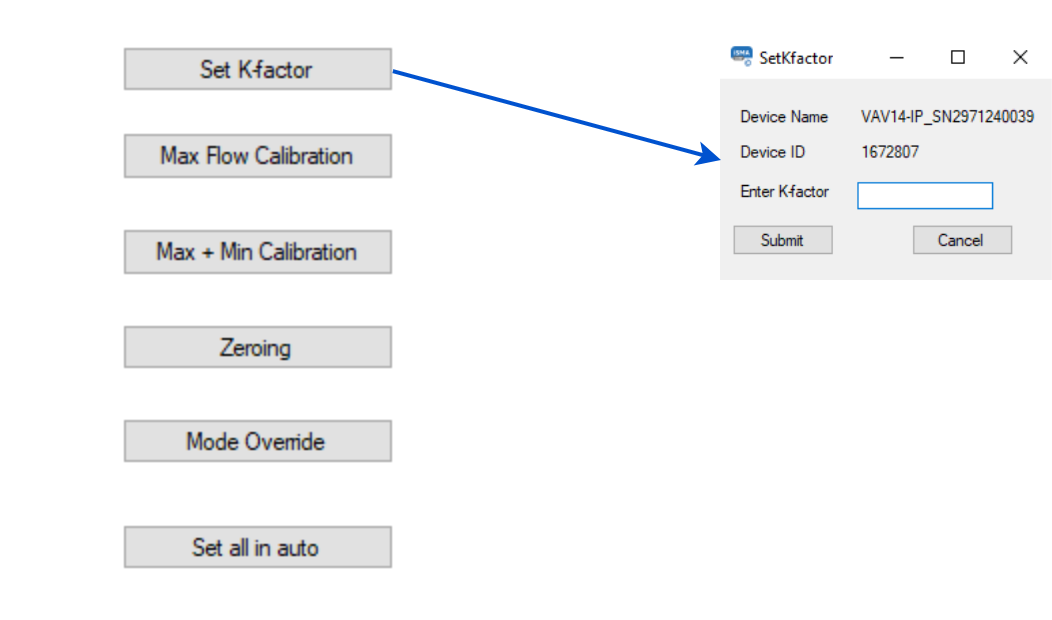
Setting K-factor pop-up
Maximum and Minimum Airflow Calibration
To perform the full balancing process, proceed to the maximum and minimum airflow calibration action, under the Max. + Min. Calibration button. The action invokes two pop-up windows, first for the maximum calibration in step 1, and second for the minimum airflow calibration in step 2.
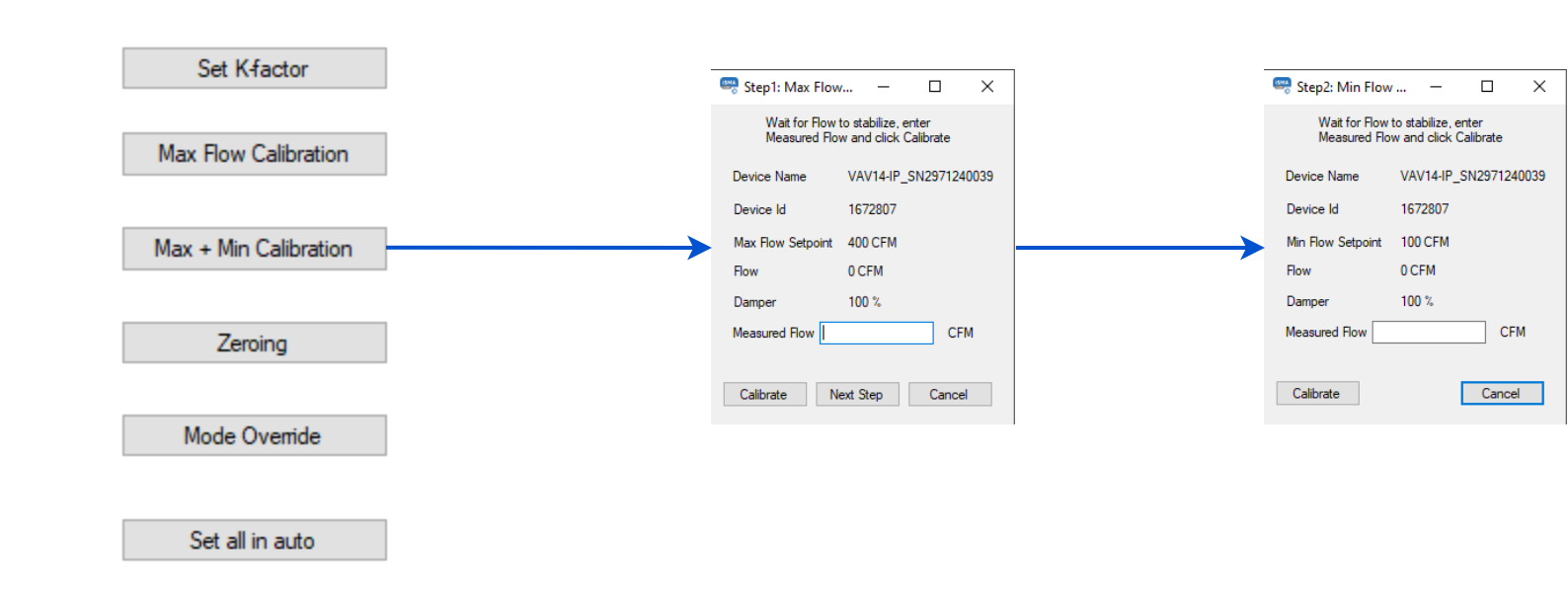
Maximum and minimum airflow calibration pop-ups
In step 1, measure the airflow and enter the measured value. Then, proceed to calibration (using the Calibrate button). The action will return a newly calculated K-factor.
After completing step 1, continue to step 2, the minimum airflow calibration. Enter the measured airflow value and use the Calibrate button.
Note
Invoking this action prompts an override warning pop-up:
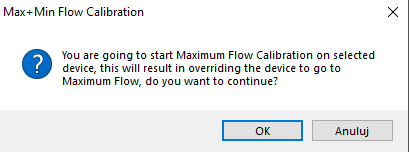
Maximum Airflow Calibration
If, for any reason, the minimum airflow calibration is not required, it is possible to perform only the maximum airflow calibration. Measure the airflow and enter the measured value. Then, proceed to calibration (using the Calibrate button). The action will return a newly calculated K-factor.
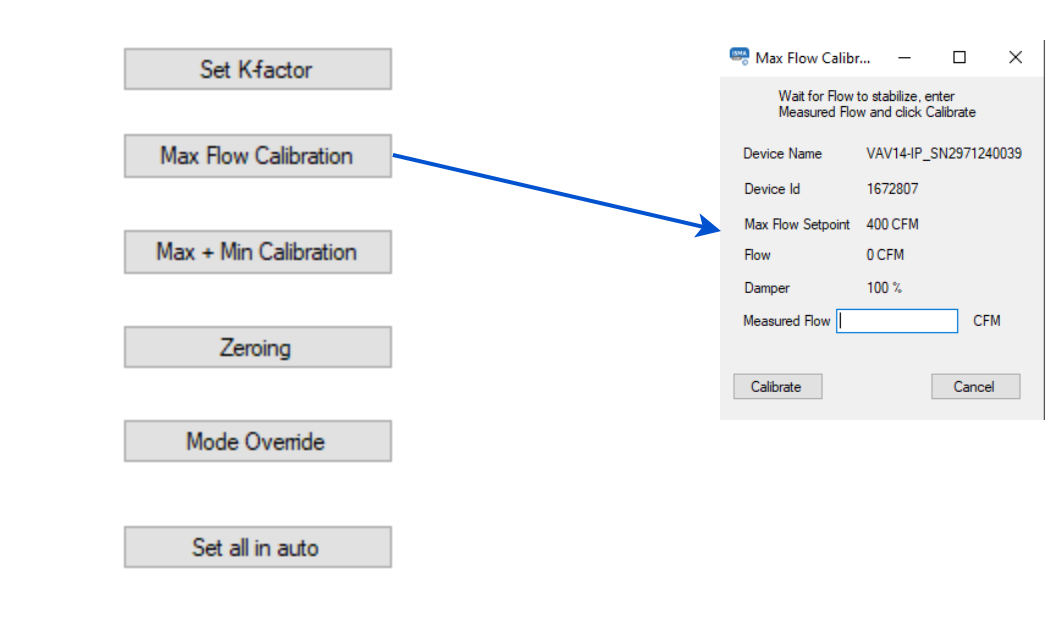
Maximum airflow calibration pop-up
Note
Invoking this action prompts an override warning pop-up:
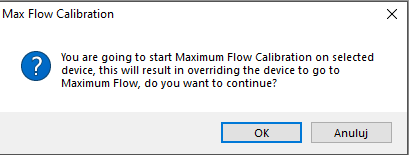
Other Actions
Mode Override
The Mode Override action allows to force an operating mode to a damper. Available modes are:
Auto: sets auto mode (VAV application logic takes control),
Max flow: goes to a maximum airflow,
Min flow: goes to a minimum airflow,
User flow: goes to a user-set airflow,
User position: goes to a user-set position (% of damper opening),
Full open: damper fully open,
Full close: damper fully closed,
Calibrate: performs a damper calibration (the damper goes to 100%, than to 0%, and goes back to the control loop output).
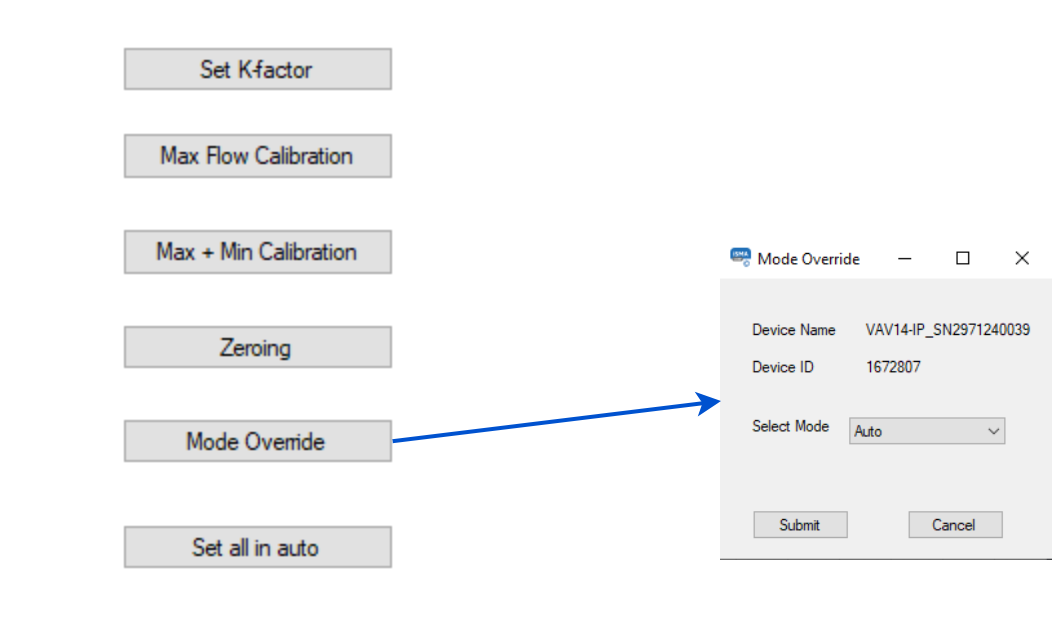
Mode override action pop-up
Set All in Auto
The Set All in Auto action forces all dampers to the Auto operating mode.
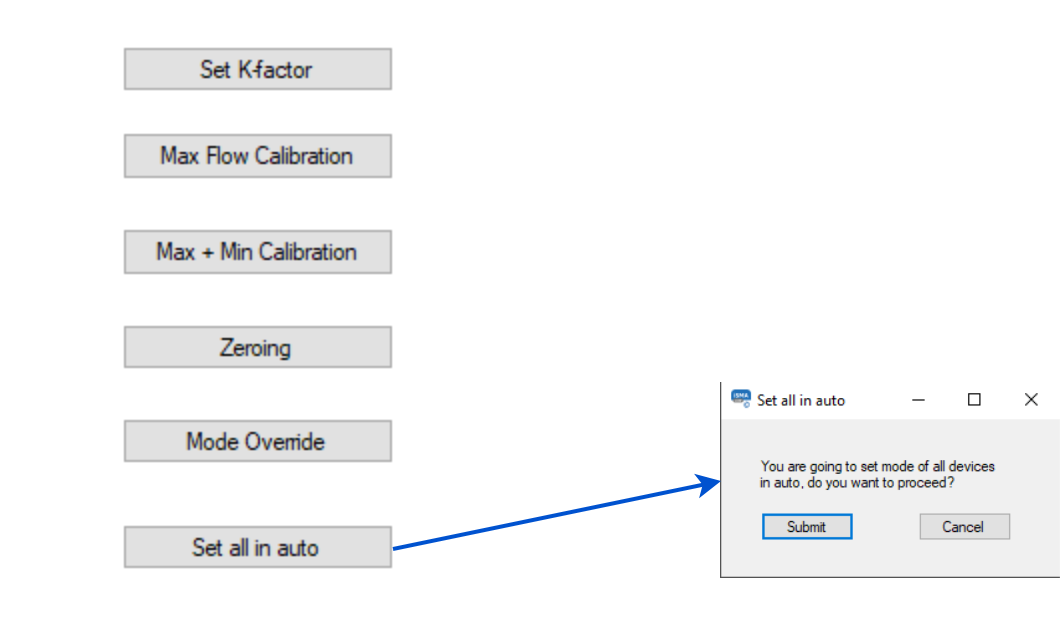
Set all in auto action pop-up
